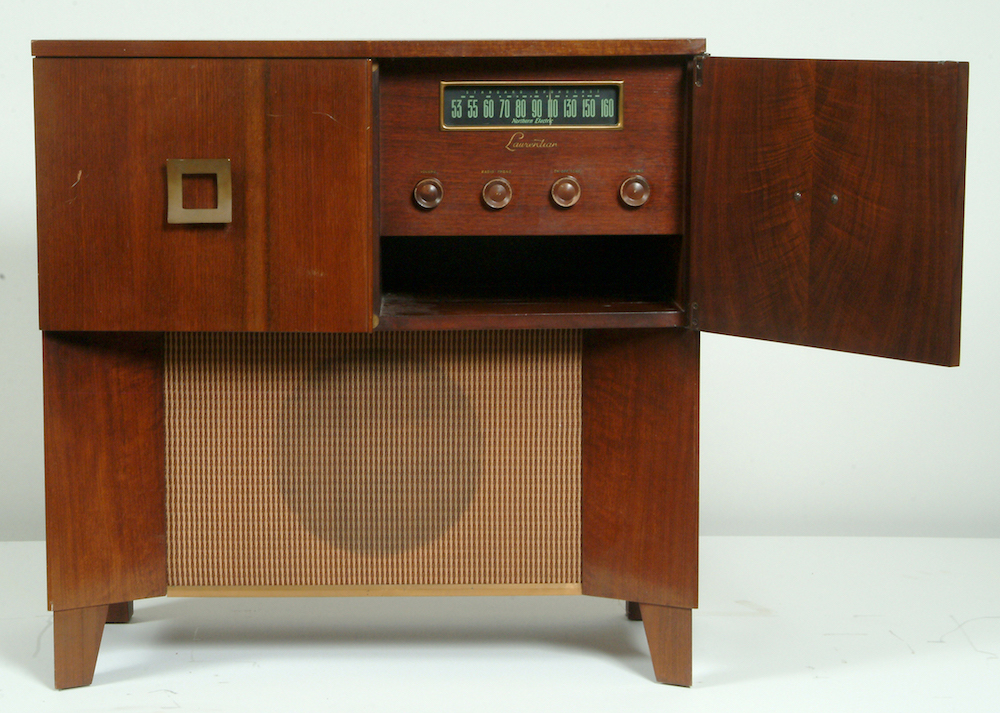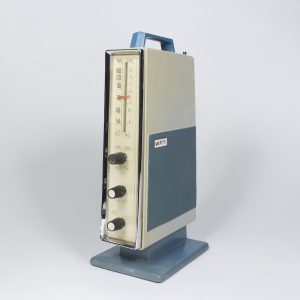Conclusion
When radios entered homes in large numbers in the 1920s, they began to change Canadian society from the inside out. They affected the rhythms of everyday life, as people gathered to listen to the news, sports or their favourite variety shows. They connected people to events and spaces outside their homes with an intimacy and immediacy never before experienced. They also helped to foster a sense of national and regional culture. Listening together in homes across the country created shared experiences.

Laurentian: Model 6403 (c.1952), Belleville, Ontario, 82 x 80 x 43cm. Musée des ondes Emile Berliner.
These patterns of communal activity continued into the television era. Instead of sitting around a radio, Canadians focused their attention on a new, electronic focal point in the living room. But radio didn’t disappear. Canadians still tuned in to morning shows while making breakfast, 0r they listened to musical concerts and other programming throughout the day. Now, however, they were sometimes listening in their cars, bedrooms, and basements. The development of FM radio brought higher quality sound out of stereos in the 1960s. Today, Canadians often listen to radio programs over the internet, whether at home or on the go.
The story of radio over the years from the 1920s to the 1950s is not just one of technological advancement. Radios did become more powerful, selective, and user-friendly. This happened thanks to developments in vacuum tubes and other key components. More importantly though, radio transformed the experience of life at home. This new electronic technology allowed listeners to connect in ways that they never had before. The design of radio receivers also helped to bring modern styles into otherwise more traditional homes. And with the creation of national radio infrastructure and programming, both by private stations and the CBC, radio became an important conduit of public culture in Canada.


